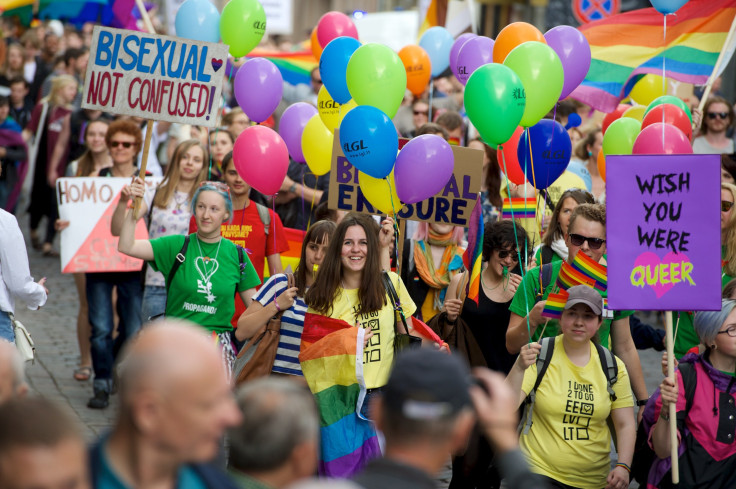Bisexuality Awareness Week: Men And Women Can Be Bisexual, But Society Still Pressures Them To Choose

The week of Sept. 20 marks the start of the 16th annual bisexuality awareness week, a time devoted to increasing visibility and acceptance of bisexual identity. Despite years of observing #biweek, there are still many issues surrounding bisexuality, namely the continued pressure for bisexuals to "pick a side."
Studies are showing that social contexts can prevent bisexual men and women from comfortably expressing their sexual curiosity, which is largely why this identity is still so convoluted. Take a look at actress Evan Rachel Wood. After coming out in 2011, Wood told the NY Daily News that those outside of the lesbian, gay, bisexual, and transgender (LGBT) community induced “panic and shame and depression” for admitting to her attraction to both men and women.
“I have battled with myself most of my life because I wasn’t gay or straight enough," she said on Twitter. "I used to think I would never be happy."
Many bisexuals have reported this same difficulty with their sexual identity. According to the Daily News, bisexuals are twice as likely to experience depression and are more likely to self-harm or attempt suicide. One study from the University of Notre Dame found admitting to a bisexual identity cis heavily influenced by social contexts.
To arrive at this conclusion, Notre Dame researchers analyzed data from the National Longitudinal Study of Adolescent to Adult Health (Add Health), which examined 5,018 women and 4,191 men in three stages of their life: ages 16, 22, and 28. Previous research had suggested that women were more likely to report being bisexual, while men were more sexually polarized, claiming to either be completely heterosexual or completely homosexual. Interestingly enough though, for this study, researchers found that men who were more educated were also more likely to admit to being bisexual.
On the other hand, women who were more educated and physically attractive would often fall into heterosexuality by default because of societal expectations to get married and have children. Lead study author Dr. Elizabeth Aura McClintock, an assistant professor of sociology, emphasized that accounting for social situations did not mean that bisexuality was purely circumstantial; instead, McClintock and her team looked into what types of environments allowed people to express their identity.
The fact that researchers were able to prove that certain societal pressures and circumstances effected bisexual expression is a testament to the difficulties Wood described. While the LGBT community is still stigmatized, bisexuals may be even more so. Given their sexual attraction is subject to change, it's not uncommon for bisexual people to feel pressure to present themselves as fully straight.
It’s telling that men who are educated are more likely to identify as bisexual: Though there is pressure to refrain from any sexual identity outside of the heteronormative trope, men who are more educated may have learned that sexual identity is not as rigid as we often paint it to be. But, this does not change the fact that bisexuals will often feel restricted by their circumstances, as well as outside pressure to deny their identity.
In light of BiWeek, it is important to take into consideration how we view this form of sexuality: Are we telling those who identify with bisexuality that they are being indecisive? And if we are, what are the repercussions of that?
Source: McClintock E, et al. The Social Context of Sexual Identity. 110th Annual Meeting of the American Sociological Association. 2015.



























